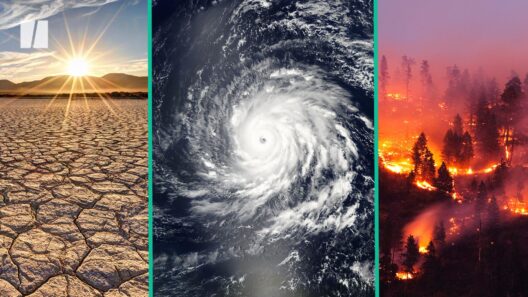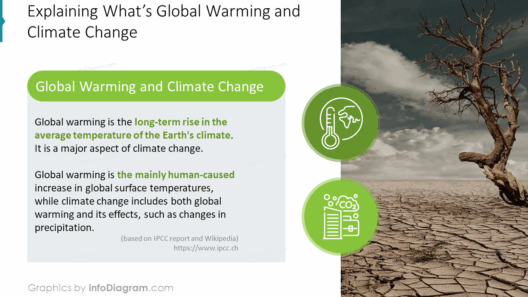Overpopulation is a multifaceted crisis that reverberates across continents, with profound implications for global warming and climate stability. From the sprawling favelas of South America to the densely packed islands of Indonesia, the struggle between human proliferation and environmental sustainability is more pressing than ever. As the world’s population surpasses 8 billion, understanding the intrinsic link between overpopulation and climate change becomes crucial for future policy and action.
To grasp the climatic consequences of overpopulation, one must first appreciate how human activities contribute to greenhouse gas emissions. Each additional person expends resources, a fact that compounds the environmental footprint of a population. In regions like Brazil, where deforestation is rampant due to agricultural expansion, each new inhabitant increases the demand for arable land, further exacerbating the destruction of the Amazon rainforest—a critical carbon sink. The consequences are twofold: biodiversity loss and heightened carbon emissions, both of which catalyze climate change.
Meanwhile, in Indonesia, a nation characterized by its diverse ecosystems and burgeoning population, overpopulation poses a unique set of challenges. The nation, with its approximately 270 million residents, faces significant pressure to provide for its citizens. Urban centers like Jakarta, which continually grow both outward and upward, can lead to unsustainable development practices. The construction necessary to support a growing population often bypasses environmental considerations, leading to increased carbon emissions and further exacerbation of climate issues.
The direct connection between population density and carbon outputs cannot be overstated. Greater populations lead to higher energy consumption, requiring increased fossil fuel use. In developing regions, reliance on coal and other non-renewable resources often escalates due to insufficient renewable infrastructure. The consequent rise in carbon dioxide levels fortifies the greenhouse effect, pushing the planet toward irreversible tipping points.
As these two regions exemplify, the issue of overpopulation transcends geographical boundaries; it is a global phenomenon. The challenge lies not only in managing resources but also in addressing consumption patterns that disproportionately affect the environment. Take, for instance, the wealth gap exacerbated by overpopulation. In affluent nations, high consumption rates often occur alongside lower population growth. Conversely, less developed nations may experience staggering population growth while resources become scarce, leading to a vicious cycle of poverty, environmental degradation, and climate vulnerability.
Moreover, the population explosion in burgeoning urban areas leads to escalating waste generation. In South America, cities struggle with waste management as landfill sites become saturated. Here, the organic waste decomposes and releases methane, a potent greenhouse gas. Indonesia faces similar challenges. The buildup of plastic waste in coastal areas contributes to marine pollution, an issue compounded by high population density that fuels consumerism without adequate waste infrastructure.
Perhaps most striking is the intersection of overpopulation and climate-induced natural disasters. Regions with high population densities are more susceptible to the effects of climate change, from flooding to droughts. In South America, increased temperatures and erratic rainfall patterns threaten agricultural yields, heightening food insecurity. Indonesia, plagued by rising sea levels and intensifying storms, finds its coastal populations at immediate risk. The convergence of these factors underlines the urgency for transformative change in policies governing population and resource use.
To mitigate these challenges, it is imperative to adopt a multidimensional approach that integrates education, sustainable urban planning, and family planning initiatives. Raising awareness about the environmental consequences of overpopulation can inspire individuals to make conscientious choices regarding family size and consumption. Sustainable development policies that prioritize renewable energy, waste reduction, and green infrastructure can pave the way for a less carbon-intensive future.
Furthermore, international collaborative efforts are vital. Countries should share best practices and develop framework agreements focused on sustainable population policies. Addressing overpopulation is not solely the responsibility of developing nations; it is a shared global challenge that requires cooperation and innovation. Investments in technology that enhance resource efficiency can lead to significant reductions in carbon footprints.
Ultimately, the discourse surrounding overpopulation and climate change necessitates a shift in perspective. Rather than viewing these topics as separate issues, one must recognize their interdependence. Population growth is not merely an environmental burden; it can also be an impetus for innovation and change. Challenges posed by overpopulation could inspire unprecedented advances in technology, urban design, and community building, all aimed at creating a more sustainable and equitable future.
In conclusion, addressing the impact of overpopulation on global warming is a pressing matter that requires immediate attention. From South America’s expansive landscapes to Indonesia’s bustling urban centers, the effects of overpopulation are manifest and undeniable. By fostering a holistic understanding of these dynamics, communities worldwide can embark on a path toward sustainable coexistence, contingent upon the delicate balance between human existence and environmental stewardship. Through collaborative efforts and informed policies, there’s potential not just for mitigation but also for a renaissance of innovation that respects and nurtures our planet.








